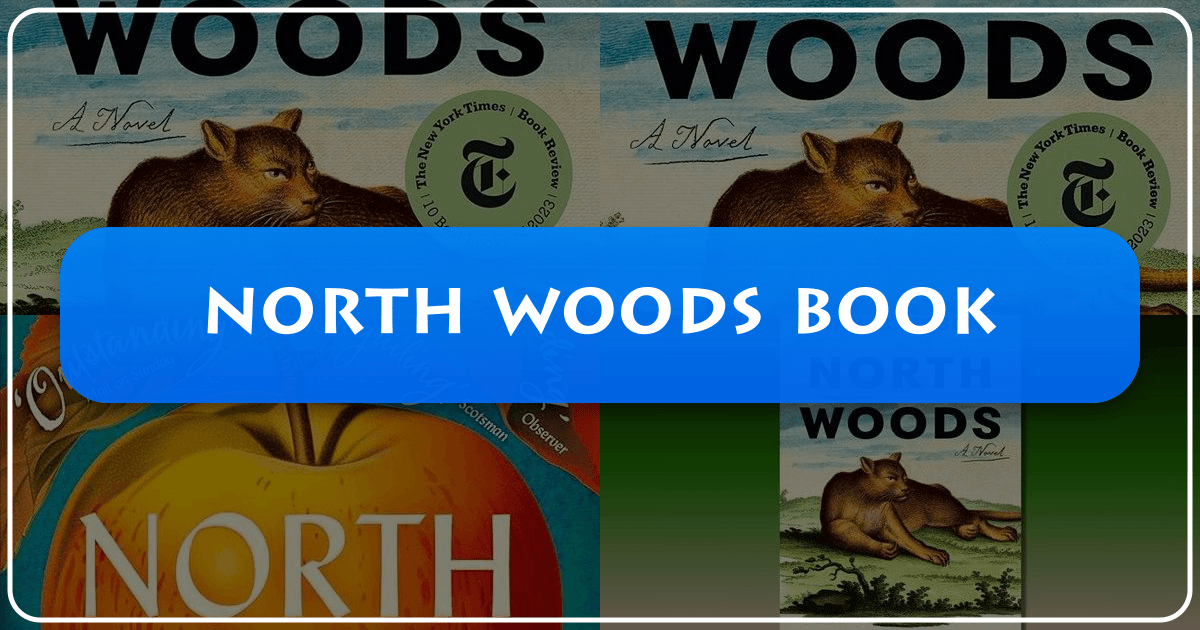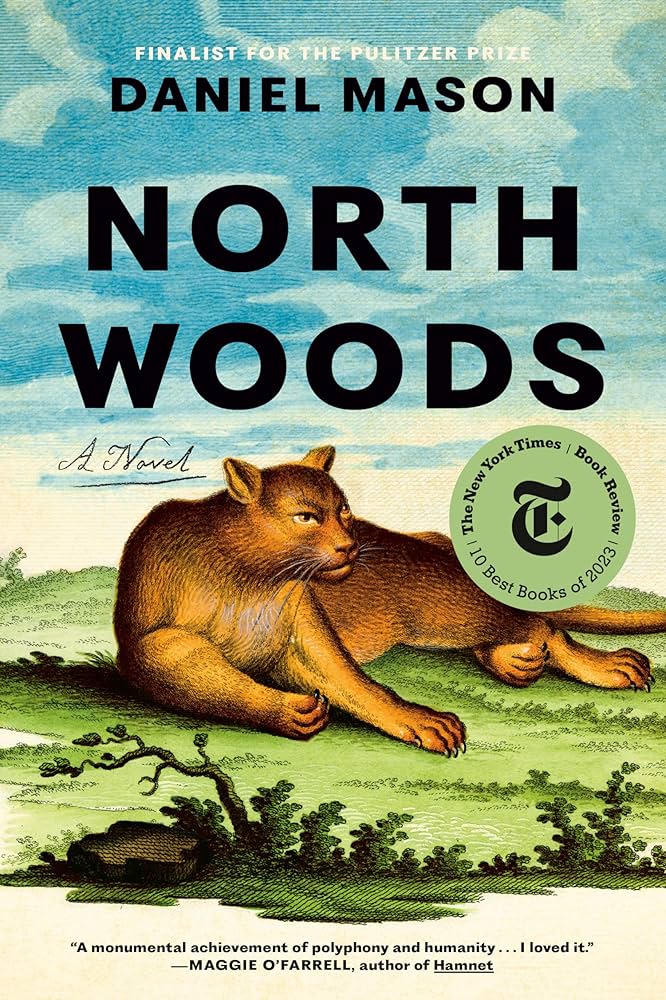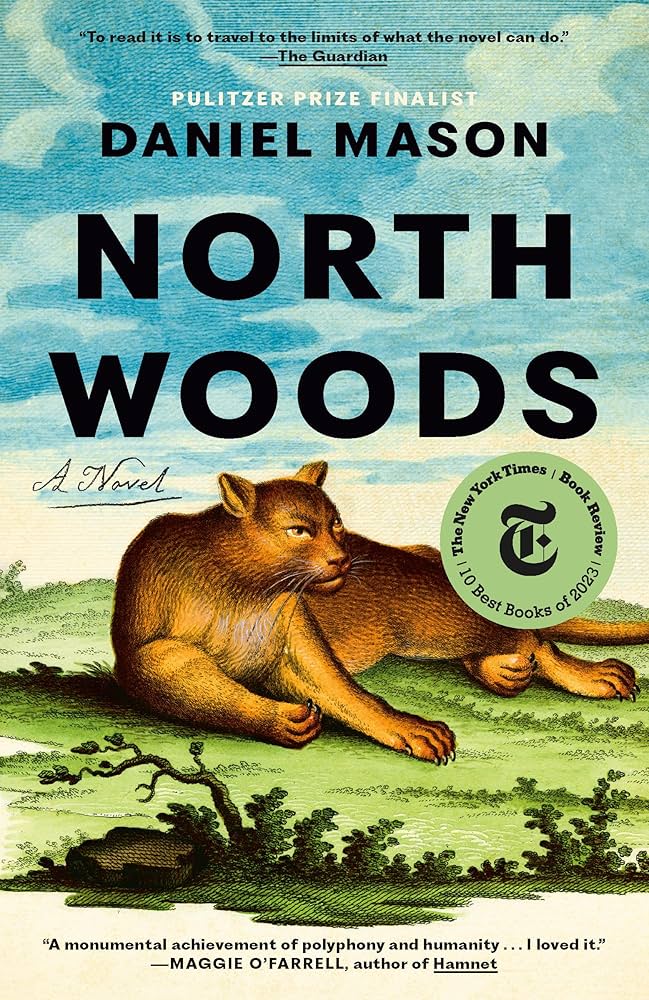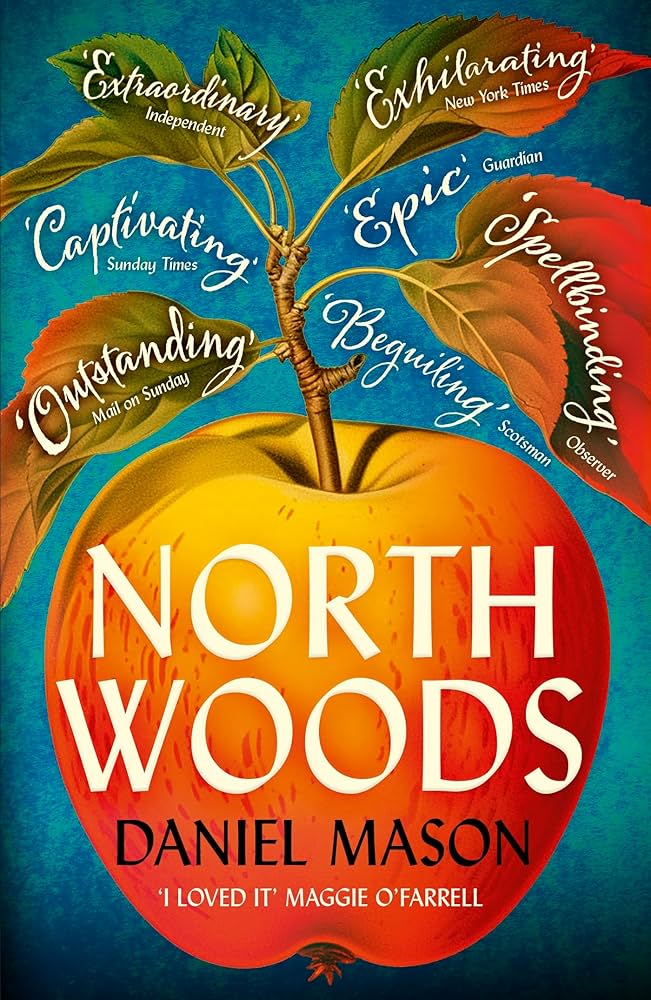*North Woods*: A Deep Dive into Daniel Mason's Multifaceted Novel

Daniel Mason’s North Woods is not your typical historical fiction novel. It’s a sprawling, ambitious work that transcends genre boundaries, weaving together multiple narratives across centuries, all centered around a single house nestled in the New England wilderness. This exploration delves into the book’s captivating plot, its unique structure, the critical reception it has garnered, and its enduring cultural impact, exploring the novel through the lenses of its books, authors, reading experiences, libraries, and cultural influences.
The Multilayered Narrative of North Woods
The novel’s central premise is deceptively simple: the story of a house and the diverse cast of human and non-human characters who inhabit it over four centuries. Beginning with a rebellious Puritan couple fleeing their community, the narrative unfolds through a series of interconnected vignettes, each focusing on a different inhabitant or visitor. We encounter an English soldier who establishes an apple orchard, a pair of spinster twins grappling with war and societal expectations, a crime reporter investigating an ancient mystery, and a lovelorn painter. These individuals, separated by time and circumstance, are mysteriously bound together by their shared connection to the house and the land. The narrative also features non-human characters like a stalking panther and a pair of mating beetles, highlighting the intricate web of life that surrounds the human drama.

Mason masterfully employs a unique structural approach, constructing the novel as a series of twelve interlinked stories, corresponding with the twelve months of the year. This structure underscores the cyclical nature of time and the ever-changing relationship between the house, its inhabitants, and the surrounding natural world. The novel isn’t simply a linear progression; instead, it mirrors the rhythms of nature, moving from the vibrancy of spring to the dormancy of winter, reflecting the ebb and flow of life and death.
The setting itself, the “north woods” of New England, is a character of its own, undergoing transformations alongside the inhabitants of the house. Mason’s descriptions of the landscape are breathtaking, evoking a sense of both the beauty and the fragility of nature. The changing seasons, the impact of human intervention, and the relentless march of ecological forces all play vital roles in shaping the story.

The supernatural elements woven into the narrative add another layer of complexity. Ghosts of past inhabitants appear to current residents, highlighting the lingering presence of the past and the mysterious interconnectedness of all life. These ethereal encounters are not presented as mere horror elements but rather as an integral part of the novel’s exploration of memory, legacy, and the enduring power of place. This intermingling of the natural and supernatural creates a richly evocative atmosphere that lingers long after the final page is turned.
Daniel Mason: A Master of Evocative Prose and Unforgettable Characters

Daniel Mason’s literary talent is undeniable. His prose in North Woods is often described as breathtaking, seamlessly weaving together vivid imagery, lyrical language, and historical accuracy. He has a gift for transporting the reader into the past, allowing them to experience the sights, sounds, and emotions of each era.
While the novel is ambitious in scope, Mason’s attention to detail is exquisite. He meticulously crafts each character, providing sufficient depth for readers to connect with their individual struggles, hopes, and fears. Despite the sheer number of characters, each possesses a unique voice that reflects their time period and personal experiences. The novel is a testament to Mason’s remarkable skill in creating memorable and compelling characters.
Beyond his prose and characterization, Mason displays his ingenuity in the novel’s structure. The use of varied narrative forms—letters, ballads, journal entries, historical documents—mirrors the fragmented nature of memory and the multifaceted experiences of the house’s inhabitants. This structural innovation not only enhances the novel’s narrative power but also serves as a commentary on the way history is remembered and interpreted across generations.
Mason’s background as a psychiatrist informs his portrayal of human behavior and relationships. The novel explores complex themes of mental illness, trauma, and the human condition with sensitivity and understanding. This insightful portrayal adds another dimension to the novel’s impact.
Critical Acclaim and Literary Influence
North Woods has been met with significant critical acclaim since its publication. The novel has garnered a considerable number of positive reviews from major publications, including The New York Times Book Review, The Washington Post, and The Guardian. Critics have praised Mason’s innovative structure, vivid prose, and the compelling way he intertwines historical events with the experiences of the house’s occupants.
Several reviewers have noted similarities between North Woods and other notable works of literature that deal with time, memory, and the interconnectedness of lives. Comparisons have been drawn to David Mitchell’s Cloud Atlas and Richard Powers’ The Overstory, both of which explore these themes through ambitious and multifaceted structures. The novel’s exploration of the natural world has also been compared to the works of Henry David Thoreau.
Despite the largely positive reception, some critics have expressed mixed opinions on the novel’s structure and pacing. Some have found the shifts between different time periods and narrative forms somewhat jarring, while others have critiqued the inclusion of supernatural elements. However, even these mixed reviews acknowledge the skill and imagination inherent in Mason’s writing.
Libraries and Archives: Preserving the Legacy of North Woods
The novel’s exploration of history and memory underscores the importance of libraries and archives in preserving our collective past. The story itself is partly constructed from fragments of historical documents, letters, and other archival materials. These elements not only enrich the narrative but also emphasize the role of these institutions in providing access to the past.
North Woods, as a newly published work, will undoubtedly find its place in various library collections, both physical and digital. Its unique literary style and thematic depth will ensure its continued study and appreciation by scholars and general readers alike. Further, its exploration of historical events and the environment could lead to its use in educational settings.
Cultural Impact and Beyond
North Woods’s cultural impact is likely to grow over time. Its themes of history, nature, and memory resonate with contemporary concerns about environmental change and the significance of the past in shaping the present. The novel’s unique structure and exploration of literary forms could also influence future generations of writers. The novel’s critical success suggests its potential for adaptation into other media, such as film or theatre. Its inclusion in awards discussions further amplifies its potential cultural influence.
The book’s exploration of the interconnectedness of life—both human and natural—offers a powerful message about our shared responsibility for the planet and the importance of understanding our past to navigate the future. Its intricate, multi-layered narrative challenges traditional notions of storytelling and invites readers to engage deeply with its themes. The lasting impact of North Woods rests not only on its literary merit but also on its ability to provoke thought, spark conversation, and inspire readers to appreciate the delicate balance between humanity and the natural world.